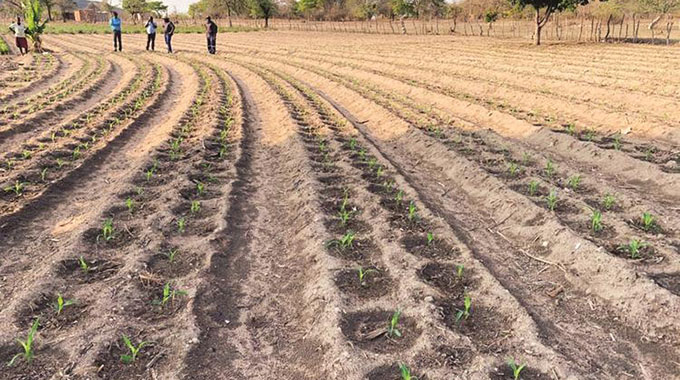Pfumvudza weeds out bogus farmers

Fungai Lupande
Mashonaland Central Bureau
The Pfumvudza Programme automatically weeds out bogus farmers that have been accessing inputs from Government and reselling them since inputs cannot be collected before land preparations are complete, acting Mashonaland Central provincial Agritex officer Mr Musekiwa Murisa has said.
The province has a target of 220 000 households and so far about 131 252 have already received their inputs and supplies for the remaining 88 746 farmers are already available.
About 513 tonnes of seed is available at Grain Marketing Board depots waiting to be distributed to farmers as soon as they finish digging their holes and after the preparations have been verified by Agritex.
“Uptake of the programme by farmers is overwhelming,” said Mr Murisa. “In the past, everyone who claimed to have a family could collect inputs and that opened up the programme to opportunists.
“Pfumvudza calls for commitment of a farmer since they are supposed to dig their holes first before receiving inputs after verification by Agritex.
“Everyone receiving inputs now are bona-fide farmers.”
Mr Murisa urged farmers to follow standard principles of the Pfumvudza concept to get a maximum yield.
“Let us meet halfway,” he said. “The Government is coming in with inputs and the farmers must look for the mulch and complete holing.
“There are no short cuts for this programme to be successful.
“Our extension officers are expected to monitor the farmers.
“Now that they have been capacitated and are mobile there should be no excuses why they cannot reach all farmers. The quality of work must improve.”
Mr Murisa said farmers were receiving lime to correct the soil pH to achieve maximum yield from the small portions.
Most Zimbabwean soils are acidic.
“A farmer is expected to have two portions, one which will be supplied to GMB to contribute towards national food security,” said Mr Murisa.
“We are targeting minimum tillage due to the January disease, which affected a large number of cattle.
“Most farmers who rely on cattle for tilling don’t have draught power. The Pfumvudza concept is bridging that gap. Farmers in high rainfall areas are receiving maize and soya beans, while small grains like sorghum and sesame are being given to farmers in areas with low rainfall patterns. Cotton inputs are also part of the Pfumvudza concept.”







Comments